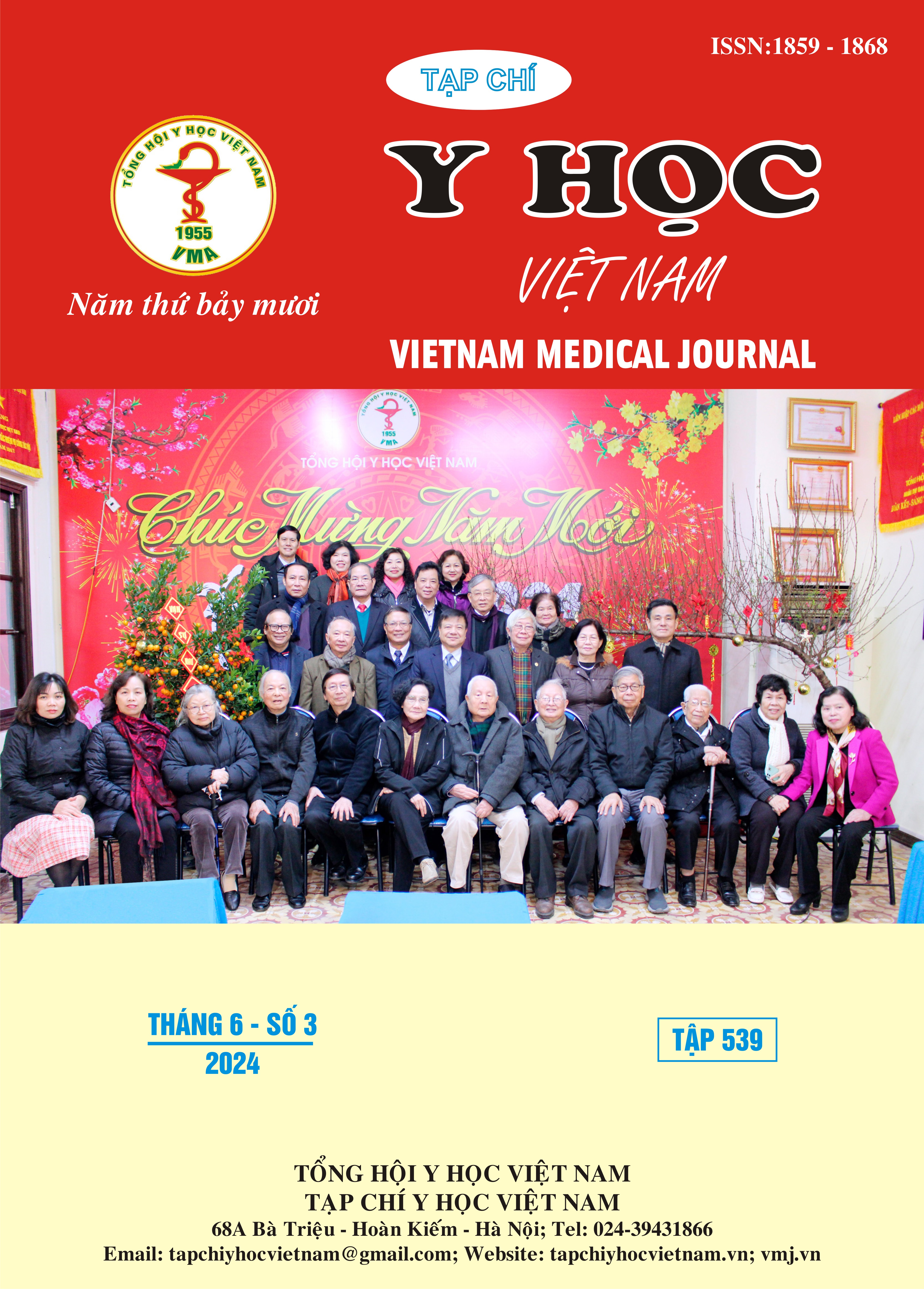CLINICAL AND SUBCLINICAL CHARACTERISTICS OF UMBILICAL HERNIA IN PATIENTS WITH CIRRHOSIS AND ASCITES OPERATED AT CHO RAY HOSPITAL
Main Article Content
Abstract
Background: Umbilical hernia is a common disease, especially in special subjects such as cirrhosis and ascites. Object: Evaluate the clinical, subclinical of umbilical hernia in patients with cirrhosis and ascites. Subjects – Methods: Retrospective study, case series report of 43 cases of surgical treatment of umbilical hernia in patients with cirrhosis ascites from January 2018 to December 2022 at Cho Ray Hospital. Results: The sex distribution male: female is 4:1. The mean age is 56,9 ± 10,7 years old (27 - 79 years old). BMI is classified into four groups: underweight 9/43 cases (9,3%), normal 22/43 cases (51,2%), overweight 8/43 cases (18,6%) and obese 9 /43 cases (20,9%). 100% of patients admit to the hospital have a bulge in the umbilicus. Hernia incarceration and painful pressing hernia mass are 51,2% and 55.8%. There are 8/43 cases (18,6%) that have complications of rupture of the hernia. The average size of the hernia mass is 6,4 ± 5,1 cm (2 – 30 cm). Patients are diagnosed mainly based on clinical examination. Cases are difficult to diagnose required the support of imaging diagnosis, in which cases with complications around the umbilicus and signs of suspetected intestinal obstruction tend to be diagnosed by CT Scan. Abdominal CT Scan is indicated in 31/43 cases (72,1%). The majority of patients are referred for emergency surgery in 37/43 cases (86%). Conclusions: Typical clinical symptoms are diagnosed mainly based on clinical symptoms, imaging techniques are used in complicated cases requiring further assessment of the composition and condition inside the hernia sac. Cases of suspected complications should have an abdominal CT Scan to investigate the hernia status for appropriate treatment.
Article Details
Keywords
Umbilical hernia, cirrhosis, clinical characteristics, subclinical characteristics
References
2. Shankar DA, Itani KMF, O'Brien WJ, Sanchez VM. Factors Associated With Long-term Outcomes of Umbilical Hernia Repair. JAMA Surg. May 1 2017; 152(5): 461-466. doi:10.1001/jamasurg. 2016.5052
3. Muysoms FE, Miserez M, Berrevoet F, et al. Classification of primary and incisional abdominal wall hernias. Hernia. Aug 2009;13(4):407-14. doi:10.1007/s10029-009-0518-x
4. Dabbas N, Adams K, Pearson K, Royle G. Frequency of abdominal wall hernias: is classical teaching out of date? JRSM Short Rep. Jan 19 2011;2(1):5. doi:10.1258/shorts.2010.010071
5. Tôn Thất Hùng. Đặc điểm lâm sàng và kết quả của phẫu thuật điều trị thoát vị vùng rốn. Đại học Y Dược TP.HCM; 2018.
6. Telem DA, Schiano T, Divino CM. Complicated hernia presentation in patients with advanced cirrhosis and refractory ascites: management and outcome. Surgery. Sep 2010; 148(3):538-43. doi: 10.1016/j.surg.2010.01.002
7. Carbonell AM, Wolfe LG, DeMaria EJ. Poor outcomes in cirrhosis-associated hernia repair: a nationwide cohort study of 32,033 patients. Hernia. Dec 2005;9(4): 353-7. doi:10.1007/ s10029-005-0022-x


